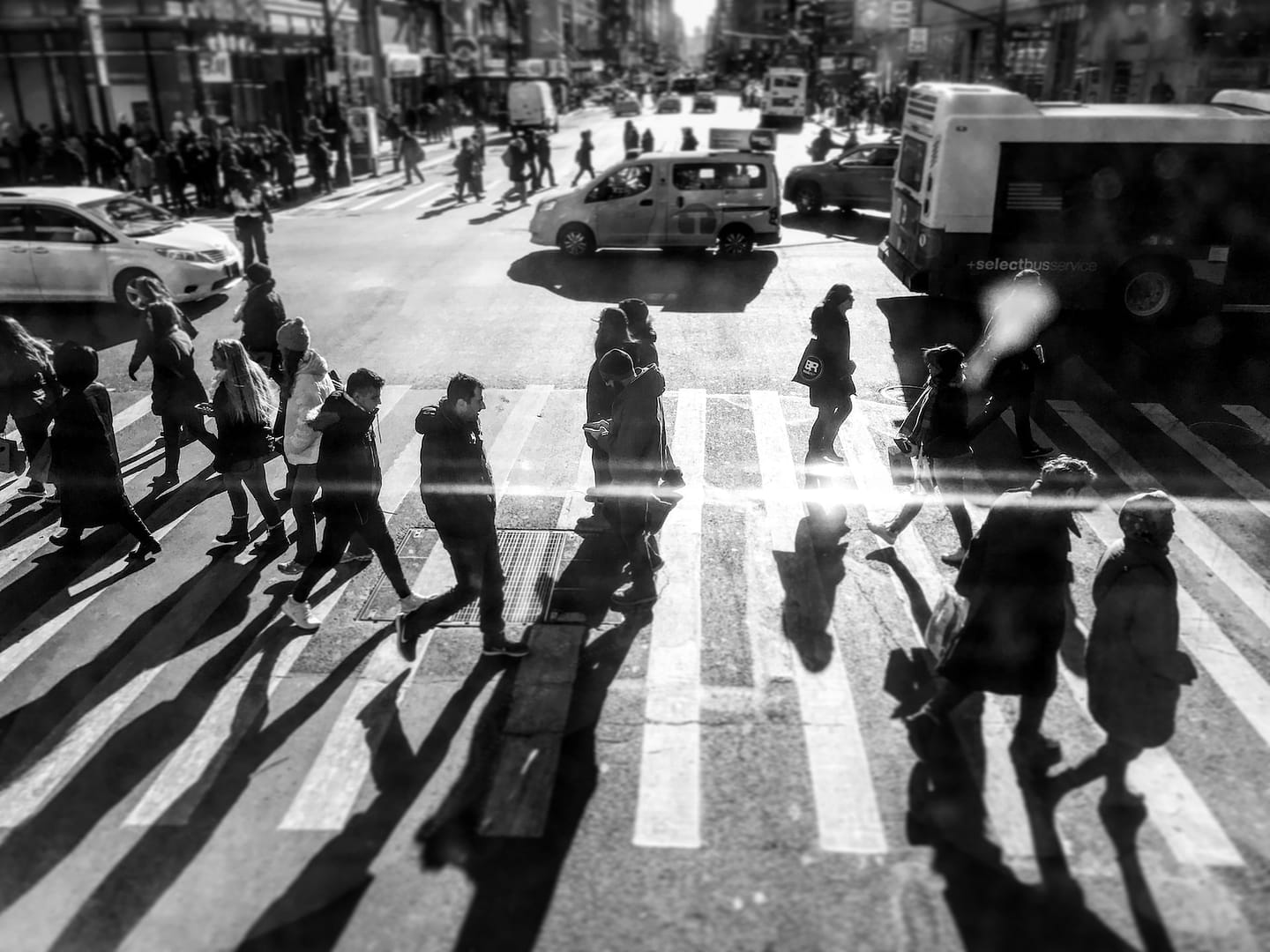In the bustling realm of the United Kingdom, where centuries-old traditions merge seamlessly with modernity, one aspect of daily life remains fundamental yet often taken for granted – the roads. Roads weave through the tapestry of this diverse nation, facilitating the movement of people, goods, and ideas. However, beneath the surface of the tarmac, a complex web of rules, hierarchies, and infrastructure silently governs how road users, ranging from pedestrians to motorised vehicles, navigate and share these vital arteries. Find out how to also make a road traffic accident claim with us.
The Hierarchy of Road Users
Understanding how the roads are shared among road users in the UK begins with recognizing the hierarchy that dictates their interactions. This hierarchy is firmly established in law and convention, shaping the way people move about and ensuring safety for all. At the very top of the hierarchy are pedestrians.
Pedestrians
Pedestrians hold a unique position in the hierarchy of road users. They are at the pinnacle, embodying the most vulnerable and yet the most fundamental form of mobility. Every journey begins and ends with a step, making pedestrians the pioneers of mobility. In the UK, pedestrians have the right of way at zebra crossings and pedestrian crossings, signifying their vital role in the shared road space.
Cyclists
Next in the hierarchy are cyclists, a rapidly growing segment of road users in the UK. Cyclists contribute to a greener, more sustainable mode of transportation, and they are encouraged through dedicated lanes and bike-sharing schemes in major cities. While they have their own lanes in some places, cyclists must share the road with other users in many instances.
Motorcyclists
Motorcyclists carve a unique niche in the hierarchy, offering a nimble alternative to cars. Their smaller size allows them to weave through traffic and reach their destinations faster in congested urban areas. However, they are also more vulnerable in accidents, which necessitates caution from both motorcyclists and other road users.
Motorists
At the base of the hierarchy, we find motorists. These individuals operate various types of motorised vehicles, from cars to trucks, and are responsible for the bulk of transportation in the UK. Motorists must adhere to strict traffic rules, respect the rights of pedestrians and cyclists, and exercise vigilance to ensure the safety of all road users.
The Four Most Vulnerable Road User Groups
Within this hierarchy, there are four distinct groups of road users that deserve special attention due to their vulnerability. These groups are particularly susceptible to accidents and injuries on the road, highlighting the importance of pedestrian-friendly infrastructure.
Children
Children represent a group of road users who often lack the experience and judgement needed to navigate the complexities of traffic. Their innocence and curiosity can lead them into precarious situations on the road, making it crucial for the UK to prioritise pedestrian-friendly infrastructure near schools and residential areas.
Elderly Individuals
On the other end of the age spectrum, elderly individuals face unique challenges as road users. Reduced mobility, impaired vision, and slower reaction times make them more vulnerable to accidents. Pedestrian-friendly infrastructure, such as well-maintained paths and accessible crossings, is vital to ensure their safety.
People with Disabilities
The UK’s commitment to inclusivity extends to people with disabilities, who make up a significant portion of road users. They rely on well-designed pedestrian infrastructure, including ramps, tactile paving, and audible signals at crossings, to navigate the urban landscape safely and independently.
Vulnerable Road Users in Low-Income Areas
Lastly, vulnerable road users in low-income areas often face additional challenges due to inadequate infrastructure and limited resources. Ensuring pedestrian-friendly infrastructure in these areas is not only a matter of safety but also of social equity.
The State of Pedestrian-Friendly Infrastructure in the UK
With this understanding of road user hierarchy and vulnerability, we can now delve into the state of pedestrian-friendly infrastructure in the United Kingdom. The UK has made significant strides in recent years to prioritise the safety and convenience of pedestrians.
Safe Crossings: Zebra Crossings and Pedestrian Signals
One of the most visible forms of pedestrian-friendly infrastructure in the UK is the ubiquitous zebra crossing. Characterised by its distinctive black and white stripes, the zebra crossing provides a safe and clearly marked path for pedestrians to cross the road. In addition to zebra crossings, pedestrian signals and countdown timers help pedestrians time their crossings safely.
Paths
Known as footpaths or pavements in the UK, play a crucial role in pedestrian safety and convenience. They provide a designated space for pedestrians, separating them from motorised traffic. In many areas, paths are well-maintained, accessible, and equipped with ramps for wheelchair users.
Pedestrian Zones
To further enhance pedestrian safety and encourage walking, some UK cities have established pedestrian zones. These areas are typically car-free or have restricted vehicle access, creating safe spaces for pedestrians to stroll, shop, and socialise without the constant presence of motorised traffic.
Pedestrian Bridges and Tunnels
In areas where roads intersect major pedestrian routes, pedestrian bridges and tunnels are often employed. These structures offer a safe and efficient way for pedestrians to cross busy roads without interfering with vehicular traffic. They are especially prevalent in urban centres where foot traffic is high.
Active Transportation Initiatives
Active transportation initiatives have gained momentum in the UK, promoting walking and cycling as healthy and environmentally friendly modes of transportation. Cities across the country are investing in dedicated cycling lanes, bike-sharing programs, and pedestrian-friendly streetscapes to encourage non-motorized travel.
Challenges and Room for Improvement
While the United Kingdom has made commendable progress in enhancing pedestrian-friendly infrastructure, there are still challenges and areas for improvement.
Urban Congestion
In densely populated urban areas, the challenge lies in striking a balance between the needs of pedestrians, cyclists, and motorists. Congestion can lead to conflicts between these groups, highlighting the importance of well-designed infrastructure and clear rules of the road.
Maintenance
Maintenance of pedestrian-friendly infrastructure is an ongoing challenge. Potholes, broken paths, and faded crossing markings can create hazards for pedestrians. Ensuring regular upkeep and repairs is essential to maintain safety.
Accessibility
Achieving universal accessibility remains a goal for pedestrian-friendly infrastructure in the UK. While many areas have made progress in providing ramps and tactile paving for individuals with disabilities, there is room for improvement in ensuring that every part of the country is accessible to all.
Road Safety Education
Promoting road safety education and awareness is another critical aspect of enhancing pedestrian-friendly infrastructure. Educating road users about the rights and responsibilities of each group can help reduce accidents and conflicts on the road.
Making a Road Traffic Accident Claim with National Claims
At National Claims, we understand that accidents can happen even in the best-maintained pedestrian-friendly environments. If you find yourself in a road traffic accident as a pedestrian, cyclist, motorcyclist, or motorist in the UK, we’re here to help you navigate the complexities of making a road traffic accident claim.
Our team of experienced professionals specialises in handling road traffic accident claims, ensuring that you receive the compensation you deserve for injuries, medical expenses, and other losses resulting from the accident. We guide you through the entire claims process, from gathering evidence to negotiating with insurance companies, so you can focus on your recovery.
To initiate a road traffic accident claim with National Claims, simply contact our dedicated team. We’ll provide you with a free consultation to assess the merits of your case and explain the steps involved in pursuing your claim. With our expertise, you can seek justice and financial recovery with confidence.

Conclusion
In the United Kingdom, the roads are shared among a diverse array of road users, each with their own rights and responsibilities. From pedestrians at the top of the hierarchy to motorists at the base, the intricate web of road users relies on pedestrian-friendly infrastructure to navigate safely. The UK has made substantial progress in this regard, with safe crossings, well-maintained paths, and active transportation initiatives. However, challenges persist, including urban congestion, maintenance, accessibility, and the need for road safety education.
As the UK looks to the future, the continued development of pedestrian-friendly infrastructure is crucial. Sustainable transportation initiatives, smart infrastructure, inclusivity, and pedestrianisation of urban areas all hold promise for enhancing the safety and convenience of pedestrians and cyclists. With a concerted effort to prioritise pedestrian-friendly infrastructure, the UK can ensure that its roads remain shared spaces that cater to the needs of all road users, from the youngest pedestrians to the seasoned motorcyclists. And in times of need, National Claims stands ready to assist road traffic accident victims in their pursuit of justice and compensation, ensuring that their rights are protected on the journey to recovery.
Contact us now and start your claim for your road traffic accident.
Click below to see why we are one of the most trusted claims management companies in the UK.

We’re proud of our excellent customer reviews
We thrive on delivering exceptional service and ensuring our clients’ satisfaction. Don’t just take our word for it. Check out some of our independent reviews to see what our clients have to say.
Excellent

This firm is excellent, they sorted out my car pay out and injury claim very fast, they always communicate with you all the time.

My accident case was dealt with confidence and with great result of the outcome, especially James kept me informed all the time.

I was very impressed at the way my inquiry was treated. I was listened to attentively and everything I needed to know was explained to me.






